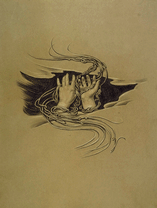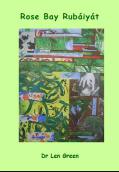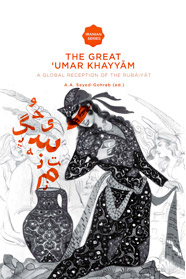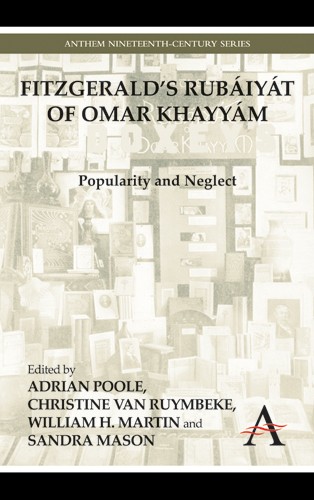Juan Ricardo Cole (1952), who describes himself as a public intellectual, prominent  blogger and essayist, and the Richard P. Mitchell Collegiate Professor of History at the University of Michigan, recently translated a large number of quatrains from Whinfield (1883). Many of these were published in his weblog as separate posts, see: http://www.juancole.com/?s=khayyam
blogger and essayist, and the Richard P. Mitchell Collegiate Professor of History at the University of Michigan, recently translated a large number of quatrains from Whinfield (1883). Many of these were published in his weblog as separate posts, see: http://www.juancole.com/?s=khayyam
In a recent article Rescuing Omar Khayyam from the Victorians (Michigan Quarterly Review, vol 52, nr.2) (Abstract) Cole explains his translations by stating that “Fitzgerald’s verses are often lovely and memorable and are justly celebrated. But each generation deserves new translations of the classics. What would happen if we put the Persian instead into contemporary idiomatic English? What if we removed the distancing language and spoke of being in a bar instead of “frequenting a tavern”?”
Here is an example of what that looks like:
Since no one can trust
in tomorrow,
find a way to fill
this grieving heart
with joy.
Drink up in the light of the moon –
a moon that someday
will look for us
and not find us.
In the parallel quatrain, FitzGerald, (1859, nr. 74) “neglects to mention the poet’s inconsolable broken heart or resort to wine to dull the pain”, as Cole notes, for not finding “the now-deceased revelers” in the light of the moon that keeps on shining when we all are gone.
In his article Cole gives a few more arguments for a new translation. One is that “the poems attributed to Khayyam are in a simple, direct, irreverent, and bawdy language”. That doesn’t imply, I trust, that we also need hiphop versions of Alle Menschen werden Brüder or a comic version of the Nightwatch.
I feel that Cole has a point though, and of course, some of FitzGerald’s renderings are mysterious and hard to grasp, but that is part of the magic. Surely we can live on water and bread, but we want something on it.
 Iowa in 1924. The author explaines that “Omar Khayyám’s nature was profoundly religious, and as a pagan preacher of “righteousness, moderation and judgement to come,” he has a message to millions of our western world who profess and call themselves Christian and yet do not take their profession seriously.”
Iowa in 1924. The author explaines that “Omar Khayyám’s nature was profoundly religious, and as a pagan preacher of “righteousness, moderation and judgement to come,” he has a message to millions of our western world who profess and call themselves Christian and yet do not take their profession seriously.” Though drinking alcohol is forbidden in Islam, in classical Persian literature wine was a common subject for most authors and poets. The debate as a popular genre was often used to let forbidden objects or ideas, in this case the wine, present the pro’s and con’s and argue about their position in an Islamic society. A very popular theme was the debate between wine and a rose. In this highly interesting article, the author discusses a treatise by the thirteenth century author Muhammad Zangī Bukhārī Gul u mul (“The Rose and the Wine”).
Though drinking alcohol is forbidden in Islam, in classical Persian literature wine was a common subject for most authors and poets. The debate as a popular genre was often used to let forbidden objects or ideas, in this case the wine, present the pro’s and con’s and argue about their position in an Islamic society. A very popular theme was the debate between wine and a rose. In this highly interesting article, the author discusses a treatise by the thirteenth century author Muhammad Zangī Bukhārī Gul u mul (“The Rose and the Wine”). background of Khayyám’s poetry. He also published some paraphrases, written by himself. The book Rose Bay Rubaiyat has been published not for profit, and with appropriate authorization it is currently available for sale in support of Médecins Sans Frontières – Doctors Without Borders.
background of Khayyám’s poetry. He also published some paraphrases, written by himself. The book Rose Bay Rubaiyat has been published not for profit, and with appropriate authorization it is currently available for sale in support of Médecins Sans Frontières – Doctors Without Borders. The book The Great ’Umar Khayyam, which consists of 18 essays about Khayyam’s influence, shows that traces of Khayyam can be found throughout Western literature and culture. Dutch poets such as Leopold and Boutens were inspired by him, for instance, but the quatrains also made their mark in 20th century painting and music.
The book The Great ’Umar Khayyam, which consists of 18 essays about Khayyam’s influence, shows that traces of Khayyam can be found throughout Western literature and culture. Dutch poets such as Leopold and Boutens were inspired by him, for instance, but the quatrains also made their mark in 20th century painting and music. This title from Anthem Press, edited by Adrian Poole, Christine van Ruymbeke, William H. Martin and Sandra Mason, was initially published in 2011, but is now available as Ebook.
This title from Anthem Press, edited by Adrian Poole, Christine van Ruymbeke, William H. Martin and Sandra Mason, was initially published in 2011, but is now available as Ebook.